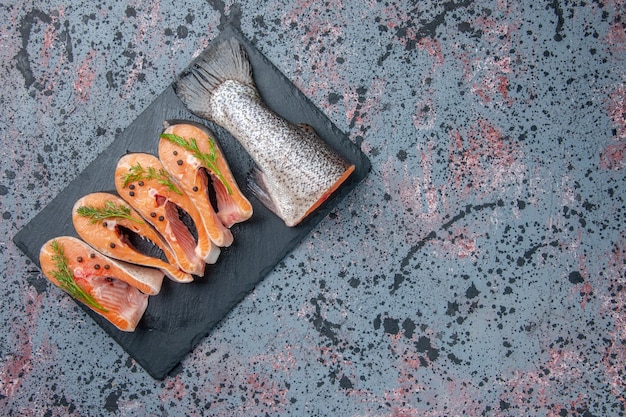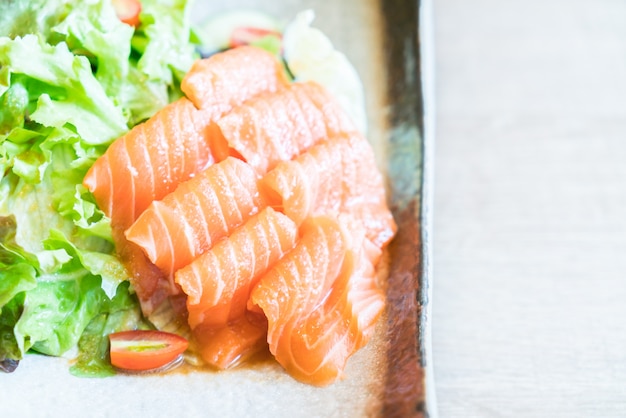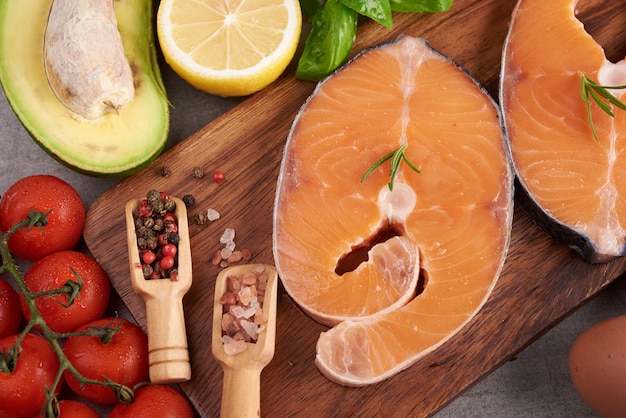We all love a good salmon dinner, but sometimes, life gets in the way and that beautiful piece of fish is still frozen solid when dinnertime rolls around. I've been there, and I know how tempting it is to just chuck it in the pan and hope for the best. But cooking frozen salmon can be a bit of a gamble if you don't know what you're doing. You don't want a dry, rubbery mess, do you? Let's dive into the world of cooking frozen salmon – the right way, of course. I'm here to share my tips, tricks, and a few personal anecdotes about my own salmon cooking mishaps (we've all been there!) to make sure you get a perfectly cooked, juicy, flaky salmon every time.
Part 1: The Great Frozen Salmon Debate

There's a bit of a debate about cooking salmon from frozen. Some folks insist that you must thaw it out first. They swear by the gentle defrosting process in the fridge overnight. I understand their perspective, as it allows for more control and can prevent uneven cooking. But let's be honest, who always has the time for that? Sometimes you just need dinner on the table, and fast! That's where cooking from frozen comes in handy.
The Pros and Cons
Cooking frozen salmon has its fair share of advantages and disadvantages. Let's weigh them out, shall we?
Pros
- Convenience: It's a no-brainer! Cooking from frozen saves you valuable time. No waiting around for defrosting – perfect for those busy weeknights. Remember that time when you forgot to take the salmon out the night before, but still managed to have a delicious dinner thanks to frozen salmon? Yeah, we've all been there!
- Longer Shelf Life: Frozen food generally lasts longer, right? So, if you're not planning on using your salmon immediately, freezing it helps keep it fresh for longer. This is great for meal prepping or stocking up on salmon for future meals.
- Versatility: Frozen salmon is a versatile ingredient that you can cook in various ways – oven, pan, grill, even in the slow cooker! It's quite adaptable and can be incorporated into numerous dishes.
Cons
- Uneven Cooking: It's true, frozen salmon can be a bit trickier to cook evenly. The outer layers might cook faster, leaving the center undercooked. But, with the right techniques, you can definitely prevent this.
- Potential for Dryness: Frozen salmon can sometimes be a tad drier than fresh salmon because it loses moisture during the freezing process. However, using the right cooking method and techniques can help to prevent this.
- Less Flavor: Some people claim that frozen salmon lacks the same depth of flavour as fresh salmon. But, again, with the right approach, this can be rectified with good cooking and flavour-enhancing techniques.
So, there you have it – a bit of a mixed bag, isn't it? But with the right approach, cooking frozen salmon can be a delicious and time-saving solution.
Part 2: how to cook frozen salmon Perfectly

You're convinced that cooking frozen salmon is worth a shot. Now, let's talk techniques! You want that perfectly cooked salmon – juicy, flaky, and bursting with flavour. No dry, rubbery bits, thank you very much!
1. The Key to Success: Pre-Seasoning
Here's a little secret – pre-seasoning is absolutely vital! It's not about a quick sprinkle of salt and pepper before tossing it in the pan. I'm talking about a proper marinade. It's the key to keeping your salmon moist and infusing it with flavour.
My Favourite Marinade (Get ready for this one!)
- Juice of 1 lemon
- 2 tablespoons olive oil
- 1 tablespoon soy sauce
- 1 tablespoon honey
- 1 teaspoon minced garlic
- Fresh herbs (like dill, parsley, or thyme)
- Salt and pepper to taste
Mix it all up and pour it over your frozen salmon. Pop it in the fridge for at least an hour, or even overnight if you have the time. Let that marinade work its magic and infuse those delicious flavours into the fish. You won't regret it. Trust me, I've learned this the hard way!
2. The Oven: A Reliable Choice
Now, if you're after a failsafe method, the oven is your best friend. It's straightforward, and the results are usually quite impressive.
How to Bake Frozen Salmon in the Oven
- Pre-heat your oven to 375°F (190°C). You want it nice and hot.
- Line a baking sheet with parchment paper or foil. This will make cleanup a breeze.
- Place your marinated salmon on the baking sheet, skin-side down.
- Bake for about 20-25 minutes, or until the salmon is cooked through. You'll know it's ready when the internal temperature reaches 145°F (63°C). You can use a meat thermometer to check.
- Let the salmon rest for a few minutes before serving. This allows the juices to redistribute. Important step, that one!
3. The Pan: A Quick and Easy Option
For those evenings when you're short on time, the pan is a great option. It's quick, easy, and you can still achieve a delicious result.
How to Pan-fry Frozen Salmon
- Heat a tablespoon of olive oil in a non-stick pan over medium heat.
- Add your marinated salmon to the pan, skin-side down. Be careful not to overcrowd the pan. If you have a lot of salmon, do it in batches.
- Cook for about 4-5 minutes on each side, or until the salmon is cooked through. You know, you can tell it's done when the flesh flakes easily with a fork.
- Remove the salmon from the pan and serve immediately.
Now, you'll notice I've mentioned skin-side down a few times. That's because cooking the salmon skin-side down helps to keep it moist and prevents it from sticking to the pan. It's a little tip I learned from my mum, and it works like a charm.
4. The Grill: For a Crispy Finish
Right, if you fancy a bit of a crispy finish, then the grill is the way to go. It adds a lovely char and a smoky flavour that's just irresistible.
How to Grill Frozen Salmon
- Preheat your grill to medium heat.
- Place your marinated salmon on the grill, skin-side down. You want to get those nice grill marks, don't you?
- Cook for about 5-7 minutes, or until the salmon is cooked through.
- Flip the salmon over and cook for another 2-3 minutes, just to get that crispy skin.
- Remove the salmon from the grill and serve immediately.
The key to grilling frozen salmon is to watch it closely and make sure it doesn't burn. You know, you don't want to end up with a charred mess. Keep an eye on it, and you'll be fine.
Part 3: Tips for Success: The Do's and Don'ts

Alright, we've gone through the basics of cooking frozen salmon. Now, let's talk about some tips and tricks to make sure you get the best results every time.
The Do's
- Don't overcrowd the pan: If you're pan-frying or grilling, make sure you don't overcrowd the pan. This will ensure that the salmon cooks evenly. If you're cooking a lot, do it in batches.
- Cook over medium heat: Cooking over high heat can make the salmon dry out. Keep it at a medium heat, and you'll be good to go.
- Use a meat thermometer: A meat thermometer is your best friend when cooking frozen salmon. It will help you make sure that it's cooked through but not overcooked. Remember, we want that juicy, flaky salmon, not dry, rubbery fish.
- Let the salmon rest: Always let the salmon rest for a few minutes before serving. This allows the juices to redistribute and makes for a more tender and flavorful salmon.
The Don'ts
- Don't thaw the salmon at room temperature: Thawing salmon at room temperature can create a breeding ground for bacteria. The best way to thaw salmon is in the fridge overnight.
- Don't cook frozen salmon for too long: Frozen salmon cooks faster than fresh salmon, so don't cook it for the same amount of time. You'll end up with dry, rubbery fish.
- Don't over-season the salmon: Too much salt can make the salmon dry and tough. Go easy on the seasoning, and let the natural flavors of the fish shine through.
Part 4: Cooking Frozen Salmon with Different Techniques
Okay, you've got the basics down. Now, let's spice things up with some different cooking techniques for frozen salmon. I'll share some of my favorite methods.
1. salmon en papillote: A Fancy and Delicious Option
Salmon en papillote is a fancy way of cooking fish in parchment paper packets. It's a bit of a showstopper and really lets the salmon shine.
Instructions:
- Preheat the oven to 400°F (200°C).
- Lay a large piece of parchment paper on your counter and fold it in half.
- Place your marinated frozen salmon in the centre of the parchment paper.
- Add your favorite vegetables, such as sliced carrots, zucchini, or bell peppers, around the salmon. You could also add some herbs and lemon slices.
- Drizzle with some olive oil and season with salt and pepper to taste.
- Fold the parchment paper over the salmon and vegetables, sealing the edges tightly.
- Bake for about 15-20 minutes, or until the salmon is cooked through.
- Carefully transfer the parchment paper packet to a serving plate and open it at the table.
Let me tell you, the aroma that fills your kitchen while this is baking is amazing. Plus, the salmon comes out perfectly tender, moist, and full of flavour. The steam from the packet helps to create a delightful little microclimate inside, enhancing the flavour and texture of the salmon.
2. Salmon in a Foil Packet: A Simple and Delicious Option
Now, if you're after something a bit simpler, then salmon in a foil packet is a great option. It's just like salmon en papillote but uses foil instead of parchment paper.
Instructions:
- Preheat the oven to 375°F (190°C).
- Lay a large piece of aluminum foil on your counter and fold it in half.
- Place your marinated frozen salmon in the centre of the foil.
- Add your favorite vegetables, such as sliced potatoes, onions, or asparagus, around the salmon.
- Drizzle with some olive oil and season with salt and pepper to taste.
- Fold the aluminum foil over the salmon and vegetables, sealing the edges tightly.
- Bake for about 20-25 minutes, or until the salmon is cooked through.
- Carefully transfer the foil packet to a serving plate and open it at the table.
This method works really well because the foil keeps the salmon moist and tender. Plus, it makes for a super easy clean-up - no need for pots and pans.
3. slow cooker salmon: A Perfect Set-and-Forget Option
For those days when you want to do minimal work, the slow cooker is your friend. It's a brilliant option for cooking frozen salmon. Just chuck it in and let it go. Easy peasy.
Instructions:
- Place your marinated frozen salmon in the slow cooker.
- Add a cup of chicken broth to the slow cooker.
- Cover and cook on low for 4-6 hours, or on high for 2-3 hours.
- Remove the salmon from the slow cooker and serve.
The slow cooker helps to keep the salmon moist and tender. Plus, you can add all sorts of yummy ingredients, like chopped onions, garlic, or fresh herbs, to the broth for extra flavour. The possibilities are endless, really.
Part 5: Serving Frozen Salmon: Making It a Feast
Now that you've cooked your frozen salmon to perfection, it's time to think about serving it up. We want to create a delicious and satisfying meal, don't we?
side dishes: The Perfect Accompaniments
Think about what you'd like to serve with your salmon. You know, there are endless options.
Some of my favourites:
- Roasted vegetables: Roasted vegetables are a classic pairing for salmon. They add a lovely sweetness and earthiness to the dish. Think carrots, broccoli, asparagus, sweet potatoes, or bell peppers.
- potato salad: A creamy potato salad is a lovely contrast to the flaky salmon.
- rice pilaf: A simple rice pilaf is a light and fluffy accompaniment. You could even add some chopped vegetables or herbs to it.
- Green salad: A fresh green salad adds some crunch and lightness to the meal.
- Pasta salad: A colorful pasta salad is a tasty and satisfying option. You could add chopped vegetables, herbs, and a dressing.
Honestly, the beauty of cooking with frozen salmon is that you can get creative with the side dishes. Don't be afraid to experiment and find what you like best.
Sauces: Taking the Flavour Up a Notch
Now, a sauce can really elevate your salmon dish. It adds a touch of extra flavour and richness.
Here are some ideas:
- Lemon butter sauce: A simple and classic sauce that perfectly complements the salmon.
- hollandaise sauce: A rich and creamy sauce that's perfect for a special occasion.
- Creamy dill sauce: A tangy and flavorful sauce that's perfect for summertime.
- Teriyaki sauce: For a touch of Asian inspiration, try a teriyaki sauce.
- Mango salsa: A refreshing and vibrant salsa that adds a touch of sweetness and spice.
The possibilities are endless, really. Try experimenting with different sauces and see what you like best.
Part 6: frozen salmon substitutes: Other Delicious Options
Perhaps you're not in the mood for salmon, or maybe you can't find it frozen. No worries, there are other delicious options out there. Let's look at some substitutes for frozen salmon.
1. Frozen Tuna: A Hearty and Healthy Option
Frozen tuna is a great alternative to salmon. It's a lean, protein-packed fish that's packed with omega-3 fatty acids. You can cook frozen tuna in the same way you cook frozen salmon.
2. Frozen Cod: A Mild and Versatile Choice
Frozen cod is a mild and versatile fish that's perfect for all sorts of cooking methods. It's a bit less oily than salmon, but it's still delicious and healthy. You can cook it in the oven, pan-fry it, or grill it.
3. Frozen Tilapia: A budget-friendly Option
Frozen tilapia is a budget-friendly option that's readily available. It's a bit less flavorful than salmon, but it's still a decent choice. You can cook it in the oven, pan-fry it, or grill it.
Part 7: FAQs: Common Questions about Cooking Frozen Salmon
Right, let's tackle some common questions you might have about cooking frozen salmon.
1. Is it safe to cook salmon from frozen?
Yes, it's perfectly safe to cook salmon from frozen. As long as you cook it thoroughly, it's no different than cooking fresh salmon. Just make sure the internal temperature reaches 145°F (63°C).
2. How do I know if frozen salmon is bad?
Frozen salmon should be firm and opaque. If it's soft, mushy, or has a strong, unpleasant odour, then it's probably gone bad. Don't risk it. It's better to be safe than sorry.
3. How long can you keep frozen salmon in the freezer?
You can keep frozen salmon in the freezer for up to 3-4 months. After that, the quality might start to deteriorate. It's best to use it within that timeframe.
4. Can you thaw frozen salmon before cooking it?
Yes, you can thaw frozen salmon before cooking it. The best way to thaw it is in the fridge overnight. This gives the salmon time to thaw slowly and evenly, which helps to preserve its moisture and flavour.
5. How do I tell if frozen salmon is cooked through?
You can tell if frozen salmon is cooked through by checking the internal temperature with a meat thermometer. It should reach 145°F (63°C). You can also tell by the colour of the flesh, which should be opaque and flaky. If the flesh is still translucent and firm, then it's not cooked through.
Part 8: Conclusion: Embrace the Power of Frozen Salmon
There you have it – you're now a pro at cooking frozen salmon. There's no need to be afraid of using frozen salmon. It can be just as delicious and nutritious as fresh salmon. Just follow the tips and tricks I've shared, and you'll be enjoying perfectly cooked frozen salmon in no time. So, next time you're in a rush or just don't have time to defrost, don't hesitate to grab that frozen salmon and whip up a delicious meal. You won't regret it.
And remember, always use a meat thermometer to check the internal temperature of the salmon. It's the best way to ensure that it's cooked through and safe to eat.
Happy cooking, and enjoy your salmon!
Everyone is watching

How to Cook Frozen Lobster Tails Perfectly: A Step-by-Step Guide
RecipesLobster. Just the word conjures up images of lavish meals, special occasions, and a taste of luxury. But let's...

Pigs in a Blanket Cooking Time: How Long to Bake for Perfect Results
RecipesAh, pigs in a blanket. Just the name conjures up images of those delightful little parcels of crispy pastry en...

Pork Fillet Cooking Time: How Long to Cook It Perfectly
RecipesPork fillet, or tenderloin as it's sometimes called, is a real favourite in our house. It's so versatile, and...

The Ultimate Guide to Tender, Juicy Pulled Pork
RecipesRight, let's talk pulled pork. It's one of those dishes that just screams "comfort food," doesn't it? I mean...

The Ultimate Guide to Cooking Sweet Potatoes: From Roasting to Mashing
RecipesSweet potatoes. Just the name conjures up images of warm, comforting dishes, bursts of vibrant color, and a to...
